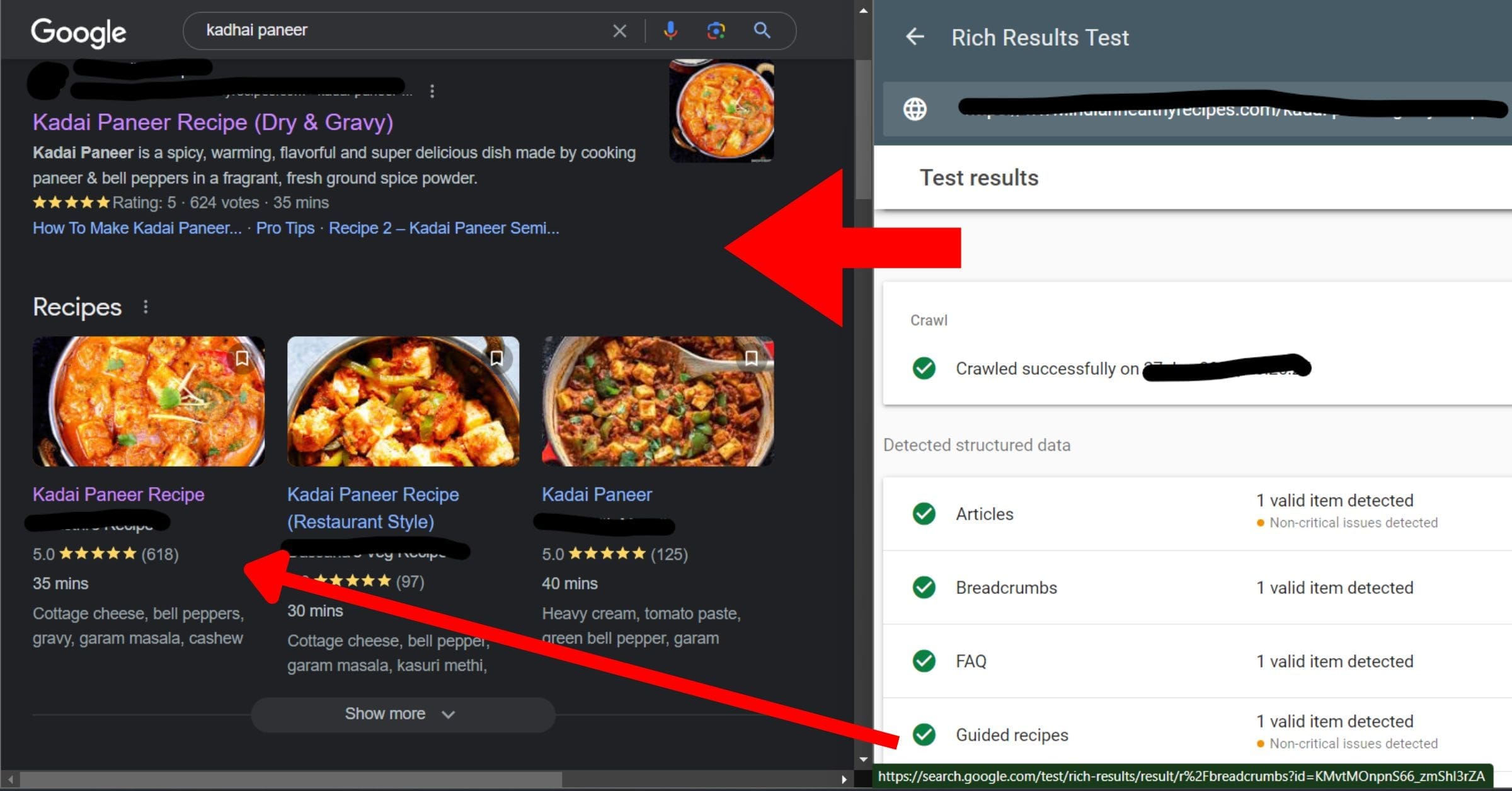This is where your SEO efforts will come in handy. To put it simply, you must make sure that major search engines understand what your content is. Speaking their language will help them better understand your material. Structured data in the form of code, or schema markup, can help search engines understand the pages and content pieces on your website.
In this context, schema is becoming increasingly vital for marketers to understand in order to optimise search engine visibility. By properly implementing it, you can improve click-through rates, enhance site traffic, and boost conversions. This handbook will provide an overview of schema and how to effectively leverage it as part of your digital marketing technology stack.
What is Schema Markup?

Schema is a set of tools that help you make your webpages easier for search engines to read. Specifically, schema markup uses standardised vocabularies and taxonomies defined by schema.org to categorise entities like people, organisations, events, products, reviews, and more. This enables Google to understand how pages relate to one another and what the main topic or entity on each page is about. Schema.org is a collaborative community that has created a set of guidelines for HTML5 & XHTML5 allowing you to create structured data for your website using schema markup.
Schema markup can be used as an essential element in your website’s meta information, as it helps search engines index content more efficiently by providing them with data about how your site’s pages are structured and organised. For example, on a product page, you can use schema to clearly identify details like the product name, price, manufacturer, images, descriptions, reviews, ratings and more. This provides much more structured data to Google compared to a normal page with just text and images.
The key benefit of adding schema markup is that it makes it easier for Google to understand the meaning and content of your pages. In return, you get rich result formatting in the search results. This includes enhancements like star ratings, carousels, or featured snippets which make your content stand out versus normal text results.
Overall, schema gives webmasters a way to annotate their pages to assist search engines in comprehending a page’s content and displaying that data more appealingly in the search results. Implementing schema improves the chances of attracting more qualified organic traffic by appearing prominently with rich results across Google’s properties.
Why Schema Matters for Performance Marketing
Adding schema improves the chances of your site appearing in rich result formats like featured snippets, knowledge panels, or carousels in organic search. This allows you to stand out on SERPs versus traditional blue link results. The better your presence in results, the more likely users will click through and convert on your site. Schema also provides detailed information to search engines, enabling you to rank better for relevant long-tail keyword queries that align with your markup. Let’s look at these benefits closely below:
1. Schema helps search engines understand your content
Search engines use a few different algorithms to decide how relevant a page is to a user’s query, understand it, and display it correctly. Schema markup is one of the most popular and effective techniques. The markup system helps search engines to recognise, parse and rank the content according to its relevance.
2. Schema makes content readable
Schema markup is designed so that it can be read by humans as well as computers. For example, if you have product information in an article on your site, you may want to markup that article with a schema so that people can quickly look up the products using Google’s Knowledge Graph feature.
3. Schema displays content better
Schema markup is a way to describe the structure of your data. Schemas are used by search engines to understand how structured data should be formatted before displaying it to users. Schema markup can help you make sure that your content is presented in the most useful way possible for search engines so that people can find what they are looking for.
Search engines often use schema markup to show search results as they relate to each other on the page. This allows them to figure out which pages on your site have related information and which do not.
4. Schema tells search engines what the data means
You can inform search engine crawlers about web data points by using schema markup. To tell search engines how to display content on your site, businesses can utilise schema markup. It informs the search engine, for instance, that a certain image depicts a person, place, or thing. This makes it possible to ensure that the search engine fully understands the meaning of each piece of data.
5. Schema ensures consistency
Schemas are a wonderful way to ensure consistency in your data. By using the same schema for a particular field, you can ensure that all records with the same value will have the same meaning.
For example, if you were collecting information about how people use their vacation time, you could add a new field called “vacation_days” and set its type to an integer. This would ensure that every record in your dataset had an explicit value for this field. If you later decided to change the meaning of this field so that it includes only days worked or not worked, you could automatically change any records where the value is not what was expected. In fact, even if you had no intention of changing it at all (for example, because there were no records with that value), it would still be possible to make changes without having to touch other records by simply changing their values in this one column (and then removing them from your dataset).
Overall, properly optimised schema equals higher visibility, engagement, and conversions from SEO!
Common Schema Types for Marketers

While there are countless schema types, some particularly beneficial options for marketers include:
1. Organisation Schema Markup
Organisation schema markup enables you to add fundamental details about your company to search results right away. This includes information like the name, address, logo, phone number, open hours, etc. that help identify your business. It can also be used to guarantee that you appear on maps.
2. Sitelink Markup
You can link one page to another within your listing description by using the sitelink syntax. Instead of clicking on the main URL and then navigating to their area of interest, visitors may use the sitelinks to go straight to the section of your website that interests them the most. Additionally, customers gain a better understanding of the variety of information and sections on your website, which helps them decide your relevancy to their specific inquiry.
However, sitelinks are not automatically shown. Google only shows them for websites when they think the user will find them to be truly relevant and helpful. The pages that are presented in the sitelink section are similarly chosen by Google, with no direct input from the website owner. However, there are actions website owners may take to promote their appearance.
3. Rating/Review Schema Markup
The rating/review schema markup allows you to display customer ratings and reviews about your product and service right in search results. This markup is quite easy to use and compatible with all platforms. The syntax is the same as that of Twitter and Facebook. Therefore, there is no need for extra coding steps. For example, you can use this to display the number of stars a product received from a user.
The opportunities to improve your website’s ranking in the Google SERP are limitless because Google enables reviews and ratings for a wide range of online assets, including businesses, products, and creative content like music or movies.
4. Article Schema
One of the most useful types of schema for content publishers and bloggers is article schema markup. Article schema is used to markup written blog posts, news articles, research papers, and other textual content. Adding article schema provides additional cues to Google about the content on that page, including title, author, image, publishing date, keywords, and topics.
Marking up this article data enables your content to appear in Google’s rich article result formats in the search results. For example, your articles may show up with an enhanced snippet that includes the article title, date, author excerpt. Additionally, article schema makes your writings eligible to appear as featured snippets at the top of search results. Featured snippets pull quotations and summaries from pages that actively implement article markup.

Schema Best Practices for SEO
Every effective website design must have schema markup. However, if you do not know how to use schema markup appropriately, you might end up overusing it and then your efforts might end in vain. Below we have supplied some useful tips you need to know, including some tips for using it effectively.
· Test before you go live
Use testing tools to identify errors before publishing markup. Consider tools like Google Structured Data Testing Tool, Schema App by Moz, Sitechecker by Ryte or Screaming Frog SEO Spider to fix any issues with incorrectly applied schema.
· The more, the better
Schema.org mentions, “the more content you mark up, the better.” Include as many relevant fields as possible while adding your organisation markup like location, nature of work, for instance. Use most commonly used markup. However, mark up only the content that is visible. Do not use placeholders for things that do not yet exist in your data or are hidden.
· Choose the markup that will have the most impact
Rich snippets markup has the greatest influence quickly, but they only work if your content is already prominently shown on page one. Furthermore, only a few schema types and characteristics will allow you to achieve rich snippets. If your company has a local presence, use the local organisation schema markup.
· Use schema generator tools to save time creating markup
These tools eliminate much of the manual work of creating properly formatted schema markup by hand. Their step-by-step funnels make it fast and easy to generate schema code customised for your site and content types. Many also have handy features like live testing to validate your schema and YouTube tutorials if you need guidance. Focus efforts on optimising page content rather than hand-coding elaborate schema. There are several for you to consider like Schema Markup Generator by SEMrush, EasySchema, SchemaCreator, or Schema.org Generator.
· Measure and improve
Analyse search performance over time and tweak schema based on results. Regularly evaluate metrics like impressions and CTRs for pages with schema markup and keyword rankings of pages for important target queries. Track which markups are triggering rich result appearances and continuously identify new content where you can add relevant schema.
Based on what results your top pages are ranking and performing well for, look to expand complementary schema. For example, if a “Best Coffee Makers” guide ranks well, consider adding more product schema or amplify review snippets. See if you can spot patterns in what schema variations positively or negatively impact rankings and traffic. There can be a ripple effect across pages from even minor tweaks. Properly dialing this in over time can have major visibility benefits.
Here is how groSamriddhi improved search results for our e-Commerce client. Being very methodical with testing to better understand what schema transforms your SERP presence and conversion performance is critical. The long game of incremental optimisation here is key for ongoing wins.
Even though using schema markup is straightforward, it is surprising how few companies and websites have done so.
According to Merkle, approximately less than one-third of webpages on google use schema.
Schema markup is one of those SEO techniques that will stick with us for a long time. So, if you are a business owner or a digital marketing expert, it is the right time to learn and implement the relevant schema techniques to improve your search results. By doing this right away, you will get a head start on the competition and put yourself ahead of the curve.




